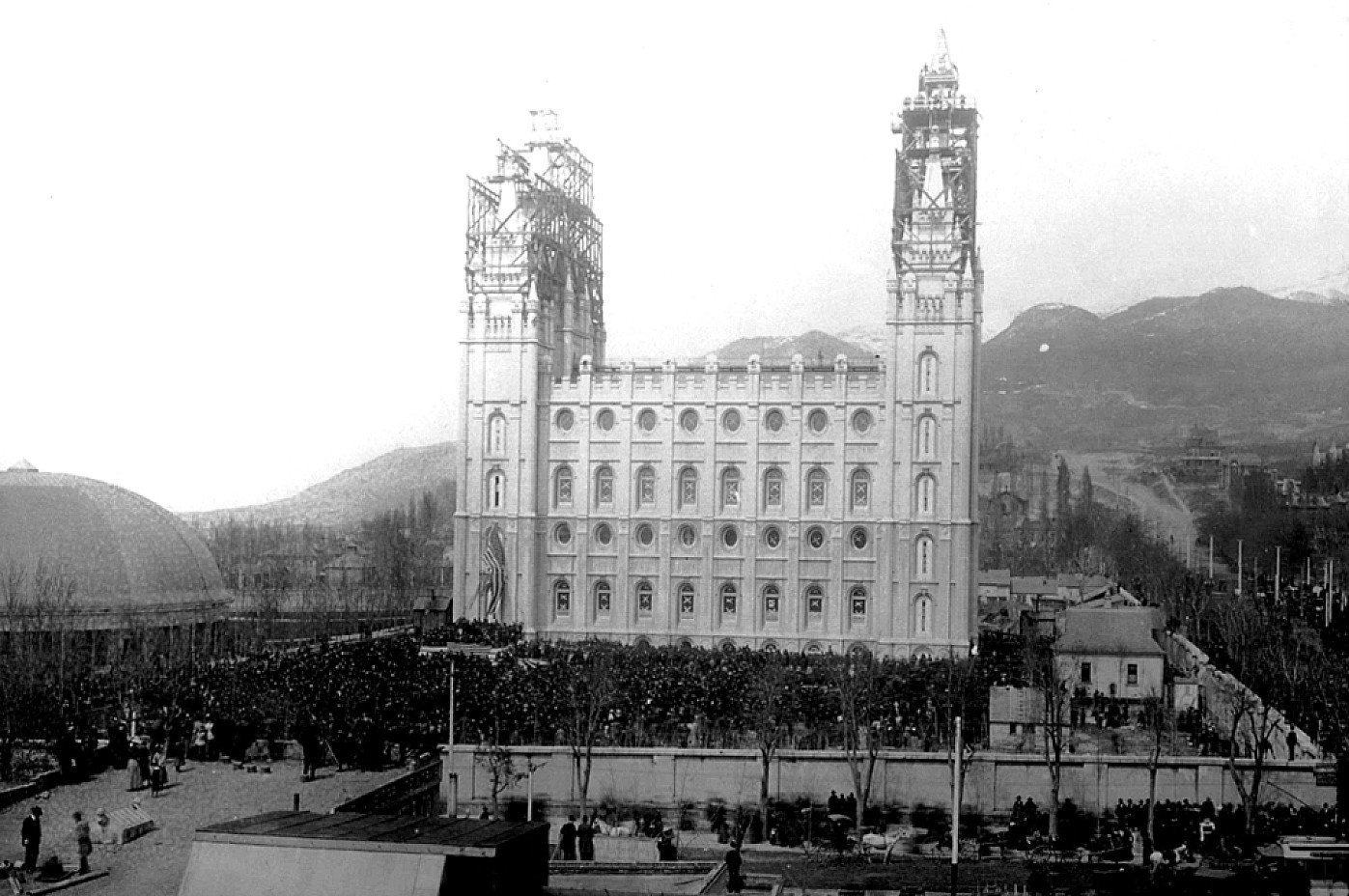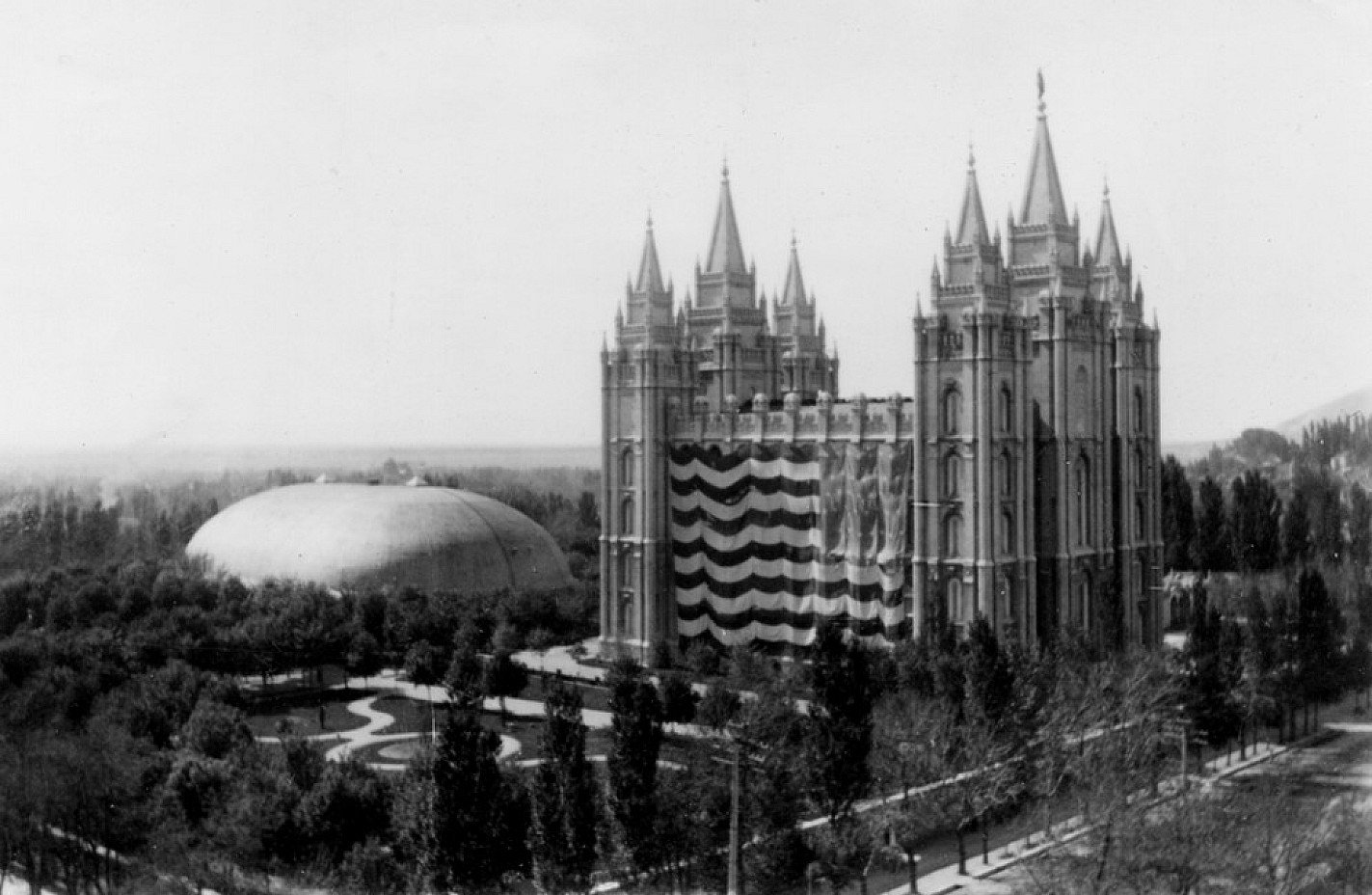1890 Manifesto
What is the 1890 Manifesto?
On September 14, 1890, the Salt Lake Tribune printed a report on polygamy written by the federally appointed Utah Commission. The Manifesto is a statement by President Wilford Woodruff, a response to the Commission’s report, published as a press release on September 25, 1890 and accepted by the Church membership during a General Conference session on October 6, 1890. It was later added to the Doctrine and Covenants as Official Declaration 1.
To Whom It May Concern: Press dispatches having been sent for political purposes, from Salt Lake City, which have been widely published, to the effect that the Utah Commission, in their recent report to the Secretary of the Interior, allege that plural marriages are still being solemnized and that forty or more such marriages have been contracted in Utah since last June or during the past year, also that in public discourses the leaders of the Church have taught, encouraged and urged the continuance of the practice of polygamy— I, therefore, as President of The Church of Jesus Christ of Latter-day Saints, do hereby, in the most solemn manner, declare that these charges are false. We are not teaching polygamy or plural marriage, nor permitting any person to enter into its practice, and I deny that either forty or any other number of plural marriages have during that period been solemnized in our Temples or in any other place in the Territory.-web.jpg)
One case has been reported, in which the parties allege that the marriage was performed in the Endowment House, in Salt Lake City, in the Spring of 1889, but I have not been able to learn who performed the ceremony; whatever was done in this matter was without my knowledge. In consequence of this alleged occurrence the Endowment House was, by my instructions, taken down without delay.
Inasmuch as laws have been enacted by Congress forbidding plural marriages, which laws have been pronounced constitutional by the court of last resort, I hereby declare my intention to submit to those laws, and to use my influence with the members of the Church over which I preside to have them do likewise.
There is nothing in my teachings to the Church or in those of my associates, during the time specified, which can be reasonably construed to inculcate or encourage polygamy; and when any Elder of the Church has used language which appeared to convey any such teaching, he has been promptly reproved. And I now publicly declare that my advice to the Latter-day Saints is to refrain from contracting any marriage forbidden by the law of the land.
Wilford Woodruff
President of The Church of Jesus Christ of Latter-day Saints
Background
From the 1840s through the 1880s, the United States government had passed laws to restrict the Saints’ freedom of religion and to deny many civil rights. The critical events leading up to the Manifesto included adverse rulings by the Supreme Court and targeted Congressional legislation. On May 19, 1890, in a 5–4 decision, the Supreme Court ruled that the federal government had the right to confiscate the Church’s property, excluding temples. At the same time, the Cullom-Struble Bill, which had been introduced in Congress in April 1890, stated that no person who supported any organization that taught any person to “enter into bigamy, polygamy, or such patriarchal or plural marriage” would be allowed to vote, serve on a jury, or hold any civil office. Had this bill passed, as similar legislation had in Idaho, it would have applied to all members of the Church whether or not they practiced plural marriage. It would also have applied to all who supported or contributed to the Church in any way, whether or not they were baptized members. The Edmunds-Tucker Act had already taken civil rights away from those who continued to practice their plural marriages in spite of the laws passed by Congress; the new legislation would have punished those who had not even violated the law.[2]
Finally, in August 1890, the government began threatening to confiscate the Church’s temples. After all the Saints had sacrificed, their faith, works, and hopes would have been in vain. They had completed the St. George, Logan, and Manti temples, and the Salt Lake temple was almost finished. On August 16, 1890, with the territorial court’s decision looming, President Woodruff declared, “We must do something to save our Temples.”[3]

President Woodruff sought counsel from trusted advisors within and outside the Church who gave straightforward advice: the government would not restore the Saints’ civil rights and their ability to self-govern as long as they continued to practice plural marriage.
The September 1, 1890 report of the Utah Commission included the claim that forty new plural marriages had been solemnized, and the report was perceived as the justification Congress needed to pass the proposed Cullom-Struble Bill. The First Presidency knew that if they acted on their own to resolve the fight over the practice of plural marriage, the Saints might refuse to comply with whatever plan they proposed. They required divine intervention because they believed that God gave the command to practice plural marriage and it would require the command of God to end it. President Woodruff called a meeting of the Apostles for September 24. In preparation for the meeting, he spent the night of the 23rd in prayer—and divine intervention did occur, in the form of a vision. God revealed to him exactly what would take place if the practice of plural marriage were not suspended. Wilford Woodruff was shown that all the temples would be lost, all the ordinances therein would cease, the Church leaders and heads of family would be imprisoned, and the Saints’ personal property would be confiscated, “all of which of themselves would stop the practice” of plural marriage.
God also revealed the alternative. If the Saints stopped plural marriage, Wilford stated, the “Prophets, Apostles and fathers” would remain at home where they could instruct the people and attend to their duties within the Church, and the temples would remain in the hands of the Saints, so they could “attend to the ordinances of the Gospel, both for the living and the dead.” He had his answer and recorded in his journal that he was prepared to act.
The Apostles spent hours discussing the wording of the Manifesto. Nevertheless, President Woodruff believed their decisions were inspired and testified, “When the hour came . . . it was all clear to me. I went before the Lord, and I wrote what the Lord told me to write.” The following day, the Manifesto, finalized in the form of a press release and signed only by Wilford Woodruff, was published in newspapers across the country.
Acceptance of the Manifesto
Ten days after the Manifesto was released to the press, it was read in general conference on October 6, 1890. A vote was called to accept President Woodruff’s declaration concerning plural marriages. Some of those present abstained from voting, but the remainder sustained their Prophet’s decision. George Q. Cannon then testified that the Manifesto was from God and was supported by the Apostles. He added that at no time before then had the Spirit “seemed to indicate that this should be done.” He continued, “We have waited for the Lord to move in the matter.” He then asked the Saints to do as their leaders had done and pray for their own confirmation that this was God’s will.
Though some Saints quickly found peace with the Manifesto, many others felt betrayed and bewildered. In the past, Wilford Woodruff had repeatedly stated his belief that God would save the Church from its enemies, the federal government among them, and that they would be allowed to live their religion—which included plural marriage—in peace. After forty five years of refusals to give in or compromise, it was hard for those inside and outside of the Church to accept that the stand-off was suddenly over. The Saints wondered why they had fought so hard for so long if the Church leaders were going to capitulate after all.

Those who accused President Woodruff of issuing the Manifesto as an act of desperation were correct in a spiritual sense. President Woodruff had previously gone to God in prayer many times regarding plural marriage. However, in the fall of 1890, President Woodruff’s query was different. His desperate prayer was for the temples and the sacred work that could only be carried on in places dedicated for that purpose. God’s response was also different. God showed President Woodruff a vision, not of the apocalyptic end to the United States government he had expected, but of the end of all ordinances on both sides of the veil. President Woodruff said he did not know why the Manifesto was the answer, but he trusted that God knew.
For the next few years President Woodruff found it necessary to defend and explain his decision to issue the Manifesto. He faced and endured the inevitable accusations from within the Church that he had lost the Spirit, betrayed those who had stood their ground for so many years, and even apostatized.
President Woodruff’s response to the various accusations came from the very revelation he received on November 24, 1889, leading to the Apostles’ refusal to suspend plural marriage a year earlier. On that occasion the Lord had promised, “If the Saints will hearken unto my voice, and the counsel of my servants, the wicked shall not prevail. . . . I the Lord will deliver my Saints from the dominion of the wicked, in mine own due time and way.” It was not up to the dissenters within the Church, the persecutors outside the Church, the monogamist majority of Church membership, John Taylor, or Wilford Woodruff. “We did not reveal it,” President Woodruff said. “We cannot denounce or withdraw it.”[4] Only God could command.
President Woodruff testified that the Lord’s approach was different than his own, that 1890 was the time, and that the Manifesto was the way that God had chosen to deliver them from their enemies. If he had to choose between pleasing God or man, he said he would choose to do what God instructed.
Each time he spoke of the process he went through to arrive at that pivotal moment in Church history, his explanation was the same: God directed him to suspend the practice of plural marriage to save the temples and the priesthood, thus continuing the saving work for the living and dead. He also emphatically stated, “I would have let the temples go, gone to prison with the apostles and head of families, allowed the [Church] property to be taken, even suffered death if God had not commanded me to do what I did.”
Endnotes
- Jennifer Ann Mackley, Wilford Woodruff's Witness: The Development of Temple Doctrine, (Seattle, Washington: High Desert Publishing, 2022), p. 235.
- Mackley, Wilford Woodruff's Witness, p. 245-246.
- Mackley, Wilford Woodruff's Witness, p. 246.
- Mackley, Wilford Woodruff's Witness, p. 252.